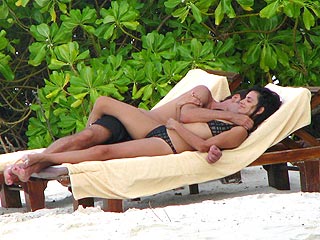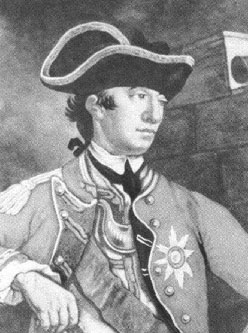This article is about the instrument as a whole. For a full description of the sound-producing mechanism, see Free reed aerophone. An
accordion is a
musical instrument of the handheld
bellows-driven
free reed aerophone family, sometimes referred to as
squeezeboxes.
The accordion is played by compression and expansion of a bellows, which generates air flow across
reeds; a
keyboard or buttons control which reeds receive air flow and therefore the tones produced.
Physical description The accordion's basic form was invented in Berlin in 1822 by Friedrich Buschmann. The accordion is one of several
European inventions of the early 19th century that used free reeds driven by a bellows; notable among them were:
An instrument called
accordion was first patented in 1829 by Cyrill Demian in
Vienna. Demian's instrument bore little resemblance to modern instruments; it only had a left hand keyboard, with the right hand simply operating the bellows. One key feature for which Demian sought the patent was the sounding of an entire chord by depressing one key. His instrument also could sound two different chords with the same key: one for each bellows direction (press, draw); this is called a
bisonoric action.
At that time in Vienna, mouth harmonicas with "Kanzellen" (chambers) had already been available for many years, along with bigger instruments driven by hand bellows. The diatonic key arrangement was also already in use on mouth-blown instruments. Demian's patent thus covered an accompanying instrument: an accordion played with the left hand, opposite to the way that comtemporary chromatic hand harmonicas were played, small and light enough to for travellers to take with them and use to accompany singing. The patent also described instruments with both bass and treble sections, although Demian preferred the bass-only instrument owing to its cost and weight advantages.
The musician Adolph Müller described a great variety of instruments in his 1833 "Schule für Accordion". At the time, Vienna and London had a close musical relationship, with musicians often performing in both cities in the same year, so it is possible that Wheatstone was aware of this type of instrument and may have used them to put his key-arrangement ideas into practice.
Jeune's flutina resembles Wheatstone's concertina in internal construction and
tone color, but it appears to complement Demian's accordion functionally. The flutina is a one-sided bisonoric melody-only instrument whose keys are operated with the right hand while the bellows is operated with the left. When the two instruments are combined, the result is quite similar to
diatonic button accordions still manufactured today.
Further innovations followed and continue to the present. Various keyboard systems have been developed, as well as voicings (the combination of multiple tones at different octaves), with mechanisms to switch between different voices during performance, and different methods of internal construction to improve tone, stability and durability.
The
Aeoline, by German Bernhard Eschenbach (and his cousin, Caspar Schlimbach), 1810. It was a piano with an added aeoline register. Similar instruments were the Aeoline Harmonika and Physharmonika. Aeoline and Aura were first without bellows or keyboard.
The Hand Physhamonika, by
Anton Haeckl, a hand type produced 1818 and patented in 1821.
The
flutina, by Pichenot Jeune, ca. 1831.
The
concertina, patented in two forms (perhaps independently): one by Carl Friedrich Uhlig, 1834 and the other by
Sir Charles Wheatstone, of which examples were built after 1829, but no patent taken out until 1844.
History The manufacture of an accordion is not a completely automated process. In a sense, all accordions could be called handmade, since there is always some hand assembly of the small parts required. The general process involves making the individual parts, assembling the subsections, assembling the entire instrument, and final decorating and packaging. However, the best accordions are always hand-made, especially in the aspect of reeds; completely hand-made reeds have a far better tonal quality than even the best automatically-manufactured reeds. Some accordions have been modified by individuals striving to bring a more pure sound out of low-end instruments, such as the ones improved by Yutaka Usui, a Japanese-born craftsman.
Manufacturing process The instrument was popularized in the United States by Count
Guido Deiro who was the first piano accordionist to perform in
Vaudeville.
Accordion is the main instrument in the
musette style of ballroom music in
France (a style now largely out of fashion) and in the
1950s chanson singing, which has a revival in the form of neo-realism.
Mexican
Norteño music also relies heavily on the accordion. The instrument was introduced into Northern Mexico by German immigrants during the 19th century. Mexican bands like
Ramón Ayala y sus Bravos del Norte, Los Tiranos Del Norte, Los Cachorros De Juan Villarreal, Los Huracanes Del Norte, Los Invasores De Nuevo Leon, and Los Cadetes De Linares have made very successful musical careers out of their lively riffs.
The accordion is an important instrument in Dutch folk music, and often the only melodious instrument when clog dancing. It is also significant in Scandinavian folk music, with notable performers including Finnish accordionist
Maria Kalaniemi. Scandinavian-influenced British folk music has, in recent years, also featured accordionists such as
Karen Tweed.
The accordion is commonly used as part of dance and ceilidh bands in
English,
Scottish and Irish traditions.
Accordion is also a central instrument in
Zydeco from
Cajun and African-American traditions in
Louisiana in the United States, and in
Polka, heard in Europe and North and South America. It is also widely used in 'ceilidh' dance music of Scotland and Ireland. The accordion gained popularity in the 1990s when Jaleel White portrayed an accordion-playing nerdy neighbor (Steve Urkel) on Family Matters. It is often seen as the epitome of the "uncool" instrument children are forced to learn by their parents in lieu of a different, "cooler" instrument such as the
guitar; however four popular
rock music acts,
"Weird Al" Yankovic,
They Might Be Giants,
The Decemberists, and
The Arcade Fire, incorporate the accordion in their distinctive sound.
In northeastern
Brazil, the accordion, along with the
triangle and the
zabumba, is the main instrument used in
forró, a traditional style usually played by trios. This genre features accordionists such as Sivuca, Dominguinhos and the "King of Baião", Luiz Gonzaga.
In
Colombia, the instrument was first introduced by European immigrants and merchants mainly of German origin through the
Antilles Islands in the early
20th Century, where local
troubadours from the
Caribbean Region used it as an instrument to accompany their sang messages. This form of music developed into the musical genre called
Vallenato, representative of Colombia.
Argentina experienced an influx of Italian and German immigrants near the turn of the century, which is why the accordion is so common in
tango music typical of the region.
It is also extremely widely used in Eastern Europe, especially in
Klezmer music.
While the accordion is a versatile instrument and is widely played throughout the world, it is not universally respected, largely because of an incorrect assumption that it is only used for polka music. A representative jibe is one from
Gary Larson, author of
The Far Side, who drew a cartoon with the punchline "Welcome to heaven, here's your harp. / Welcome to hell, here's your accordion."
The accordion (Hangeul: 아코디언) is a very integral aspect of "
Trot" music (Hangeul: 트로트) from
North Korea and
South Korea. Trot music was extremely popular in the first half of the twentieth century and it is still enjoyed by many older Koreans to this day. The accordion is often the only the instument present in a song routine. Trot music and the accordion have gained a very widespread revival in recent years in the wake of the popular singer,
Jang Yoon Jeong (Hangeul: 장윤정)and her super-hit song "Oemana!" (Hangeul: 어마나!).
[1] Musical genres On
button accordions the
melody-side
keyboard consists of a series of
buttons (rather than
piano-style keys.) There exists a wide variation in keyboard systems, tuning, action and construction of these instruments.
Diatonic button accordions have a
melody-side keyboard that is limited to the notes of
diatonic scales in a small number of
keys (sometimes only one). The
bass side usually contains the principal
chords of the instrument's key and the root notes of those chords.
Almost all diatonic button accordions (e.g.:
melodeon) are bisonoric, meaning each button produces two notes: one when the
bellows is compressed, another while it is expanded; a few instruments (e.g.:
garmon') are unisonoric, with each button producing the same note regardless of bellows direction; still others have a combination of the two types of action: see
Hybrids below.
A
chromatic button accordion is a type of button accordion where the melody-side keyboard consists of uniform rows of buttons arranged so that the pitch increases
chromatically along diagonals. The bass-side keyboard is usually the Stradella system, one of the various free-bass systems, or a converter system. Included among chromatic button accordions is the
Russian bayan. Sometimes an instrument of this class is simply called a
chromatic accordion, although other types, including the piano accordion, are fully chromatic as well. There can be 3 to 5 rows of treble buttons. In a 5 row chromatic, two additional rows repeat the first 2 rows to facilitate options in fingering. Chromatic button accordions are preferred by many
classical music performers, since the treble keyboard with diagonally arranged buttons allows a greater range, and often far greater speed, than a piano keyboard configuration. There exists an accordion with 6 rows in the treble side. It is commonly played in Serbia and throughout former Yugoslavia. The rows are based on the B system. The natives refer to it as "dugmetara".
The
Janko keyboard is used for the treble side of some accordions.
Various cultures have made their own versions of the accordion, adapted to suit their own music.
Russia alone has several, including the bayan,
Garmon',
Livenka, and
Saratovskaya Garmonika.
Button accordions Various
hybrids have been created between instruments of different keyboards and actions. Many remain curiosities, only a few have remained in use. Some notable examples are:
The
Schrammel accordion, used in
Viennese chamber music and
Klezmer, which has the treble keyboard of a chromatic button accordion and a bisonoric bass keyboard, similar to an expanded diatonic button accordion.
The
schwyzerörgeli or
Swiss organ, which has a (usually) 3-row diatonic treble and 18 unisonoric bass buttons in a bass/chord arrangement (actually a subset of the Stradella system), that travel parallel to the bellows motion.
The
trikitixa of the
Basque people has a 2-row diatonic, bisonoric treble and a 12-button diatonic unisonoric bass.
In
Scotland, the favoured diatonic accordion is, paradoxically, the instrument known as the
British Chromatic Accordion. While the right hand is bisonoric, the left hand follows the Stradella system. The elite form of this instrument is generally considered to be the German manufactured "Shand Morino", produced by
Hohner with the input of the late
Sir Jimmy Shand.
Hybrids The
Stradella Bass System uses rows of buttons arranged in a
circle of fifths; this places the principal major chords of a key in three adjacent rows. Each row contains, in order: A
major third (the "counter-bass" note), the
root note, the
major chord, the
minor chord, the
(dominant) seventh chord, and the
diminished seventh chord.
All chord buttons sound 3 note chords. Early attempts to create 4 note seventh and diminished chords were hampered by mechanical difficulties. Consequently, modern Stradella systems drop the 5th from these two chords. This has the side benefit of making the preformed chords more versatile. For example, an augmented chord can be created by using the dominant seventh button and adding an augmented 5th from the piano keyboard or from one of the bass or counterbass buttons.
Depending on the price, size or origin of the instrument, some rows may be missing completely or in different positions. In most Russian layouts the diminished seventh chord row is moved by one button, so that the C diminished seventh chord is where the F diminished seventh chord would be in a standard Stradella layout; this is done in order to achieve a better reachability with the forefinger.
 Stradella bass system Common configurations
Stradella bass system Common configurations Free bass systems allow the player to construct their own chords as well as to play bass melodies in several octaves. There are various free bass systems in use; most consist of a rotated version or mirror image of one of the melody layouts used in chromatic button accordions. One notable exception is the Titano line of converter bass, which repeats the first two bass rows of the Stradella system one and two octaves higher moving outward from the bellows. New York's Dr
William Schimmel, who composes and performs in many genres, is a leading exponent of this particular bass system and uses it extensively in tandem with the standard stradella system. In the United States, Julio Giulietti was the chief manufacturer and promoter of the free bass accordion that he called a "bassetti" accordion which was mass produced from the late 1950s onward. Giulietti accordions with free bass capability often had a "transformer" switch to go from standard pre-set chords to individual free bass notes.
Skillful use of the free bass system enabled the performance of classical piano music, rather than music arranged specifically for the accordion's standard chorded capability. Beginning in the 1960s, competitive performance on the accordion of classical piano compositions, by the great masters of music, occurred. Although never mainstreamed in the larger musical scene, this convergence with traditional classical music propelled young accordionists to an ultimate involvement with classical music heretofore not experienced.
Within the
United States, several noted instrumentalists demonstrated the unique orchestral capabilities of the free bass accordion while performing at the nation's premier concert venues and encouraged contemporary composers to write for the instrument. Included among the leading orchestral artists was
John Serry, Sr.- a noted concert accordionist, soloist, composer and arranger. Mr. Serry performed extensively in both symphonic orchestras and jazz ensembles as well as on live radio and television broadcasts. His refined poetic artistry gained recognition for the accordion among many prominent conductors and classical musicians of the twentieth century.
Recently
Guy Klucevsek has built a reputation on combining folk styles with classical forms and makes extensive use of the free bass. In Europe today, free bass accordion performance has reached a very high level, especially in Finland, Denmark, Russia, Italy and Germany. It isn't uncommon for music conservatories in Europe to consider the free bass accordion an acceptable instrument for serious study.
Many modern and
avant-garde composers (such as
Sofia Gubaidulina,
Mauricio Kagel, and
Magnus Lindberg,) have written for the free bass accordion and the instrument is becoming more frequently integrated into
new music chamber and improvisation groups.
Free bass systems Accordion chords (
file info) —
play in browser (beta)
- Chords being played on an accordion — 145 KB
Problems listening to the file? See media help. Audio samples
Squeezeboxes
Roland Virtual Accordion Other free-reeds
Players of the accordion include:
Some musicians have a love-hate relationship with the accordion. Famous anti-accordion comments include: "A gentleman is a man who can play the piano accordion... and doesn't", "The best way to play the piano accordion is with a pen-knife" (attributed to Christy Moore) and "An instrument in harmony with the sentiments of the assassin" (From Ambrose Bierce's Devil's Dictionary).
Polka stars Lawrence Welk, Angelo DiPippo, Myron Floren and Frankie Yankovic
Rock parodist "Weird Al" Yankovic
Venezuelan accordionist Roberto Ruscitti, Yann Tiersen
Rock musicians Jason Webley, Bruce Hornsby, Rob Hyman of The Hooters, Joseph Byrd, John Linnell of They Might Be Giants, Dennis DeYoung of Styx, Danny Elfman of Oingo Boingo, Neil Cicierega of Lemon Demon, Billy Joel, Franz Nicolay of The World/Inferno Friendship Society, David Hidalgo of Los Lobos, Gabby La La, Michel Martin host of new NPR show Rough Cuts, Zach Condon of Beirut, Patrick Wolf, Tré Cool of Green Day, Rick Wright of Pink Floyd who used one on live versions of "Outside the Wall" with Pink Floyd in 1980 and 1981, Gary Brooker of Procol Harum , Keith Emerson, John Evan of Jethro Tull (band), Sheryl Crow, Ryan Jarman of The Cribs, and Sweet Jonny V (Arabella) of Analog Arts EnsembleJeremy Barnes of Neutral Milk Hotel fame plays accordion with many Eastern European melodies in his band, A Hawk and a Hacksaw.
Zydeco musicians Stanley "Buckwheat" Dural of Buckwheat Zydeco, Clifton Chenier, John R. Capozello of jazz combo "The Blue Notes" and he played in US Air Force Band,
Jaleel White's character Steve Urkel of Family Matters played the accordion.
Members Régine Chassagne and Richard Reed Parry of the Montreal-based indie rock band Arcade Fire play the accordion in both live shows and on albums.
Suzie Gagnon plays the accordion with Cirque du Soleil in the touring show Corteo, and previously (for 10 years) with their touring show Alegria.
Martyn Jacques of The Tiger Lillies plays accordion in many of the London trio's pieces.
Joshua Camp plays accordion in the group, One Ring Zero.
Corn Mo plays accordion and keyboards. He plays with numerous bands including .357 Lover



 Stradella bass system
Stradella bass system The story of the real Holy Willie
The story of the real Holy Willie
 Civil War
Civil War Goya Awards
Goya Awards


 Stamp Act
Stamp Act

 Captive care
Captive care
 Yemen
Yemen After the 1917 Revolution
After the 1917 Revolution